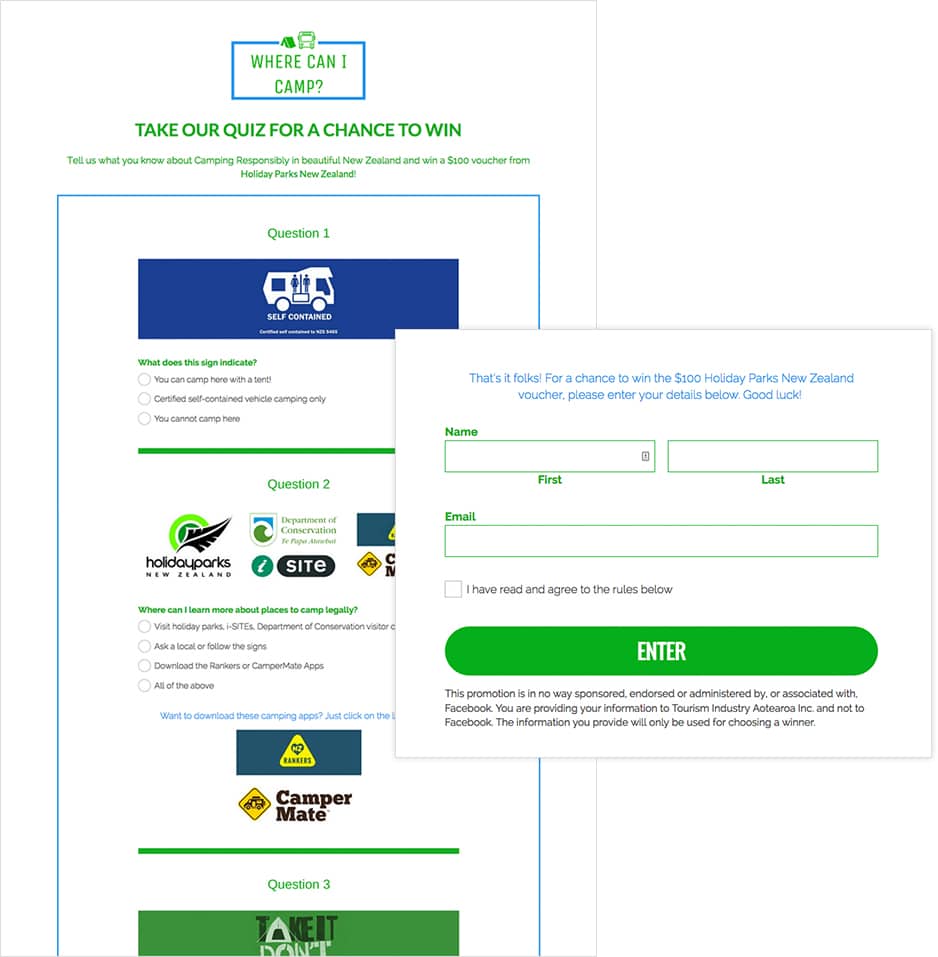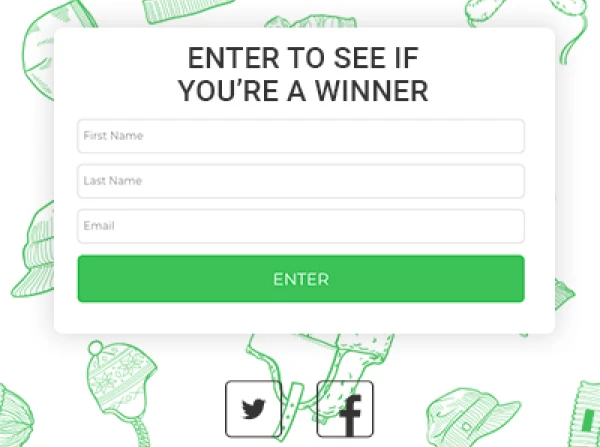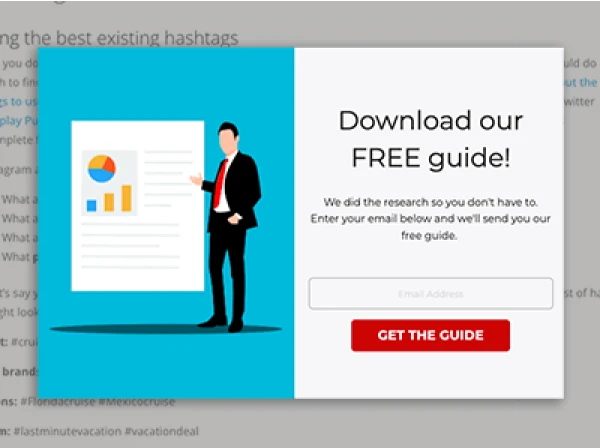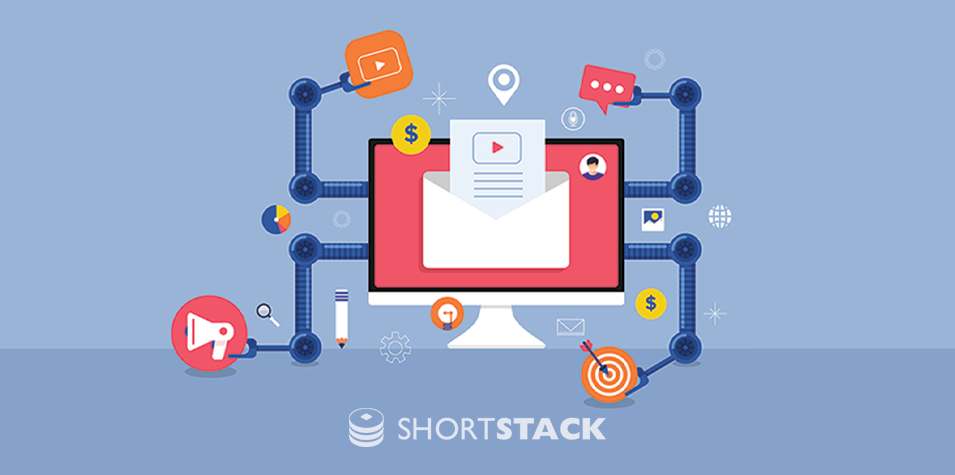There are more than two million blog posts published every day on the internet.An ever-expanding number of web pages threatens to drown out the less conscientious online marketer.Interactive marketing campaigns optimize the user experience by presenting a personalized dialogue. This engages the end user and gathers valuable data.Content, in the traditional form of articles, blog posts, and web pages, doesn’t resonate with viewers as much as it used to. Its very nature is static, and even with creative additions such as text formatting, videos, and imagery, it doesn’t grab the viewer by the shirt and inspire them to take notice. Interactive content, on the other hand, uses smart prompts and visual triggers to do exactly that.The rest of this article will outline the different types of interactive marketing campaigns and look at why your competitors are jumping on board with this exciting content marketing trend.
So, what is interactive marketing?
Interactive marketing is an online strategy that addresses the user as an individual. It gets them to respond and engage with certain stimuli, for example, taking a quiz, watching a video, or participating in a contest.Once the user engages, the campaign’s goal is to use the information gathered and move them through the sales funnel.Interactive marketing is a fluid, elastic strategy which can change based on the individual’s responses. It also takes into account where they are in the customer journey.Are they getting to know your brand? Or are they already familiar, and want a breakdown of your products or services? This is where an interactive marketing campaign can boost your conversion rates and improve customer satisfaction.
According to a Demand Metric conversion study, interactive content is 45% more effective at educating buyers than passive content.
It takes many different forms and depending on your business goals and needs, you can use any of the following models.
Types of interactive marketing
1. Contests
Contests are an awesome way to get viewers interested and excited about what your brand or business has to offer. It’s human nature to want to win things, and a contest is a way to tap into this desire. The prospect of winning something can persuade a user to give up information, handing you a wealth of relevant data about your customer base.In addition, contests can help grow your audience reach. With a contest, people gain points by ‘liking’ your business page, following you on Twitter, or even sharing a post to their social media accounts. While the contest is running, it keeps your brand at the forefront of the participants' mind because they are anticipating the announcement of the winner.Contests prompt the viewer to spread the word for you. It’s free marketing and has the potential to send your campaign viral. Also, the contest prize can be optimized for your ideal buyer or customer, helping you automatically filter prospects.Creating this type of irresistible event can pique interest, prompt people to give you their email address and enter the sales funnel. Then you can offer them more engaging, relevant, and interactive content to drive engagement from the Top all the way to the Bottom.Contests give you the ability to do several positive things for your business at once. Build followers, grow your email list, improve your chances of going viral, and gather qualified leads.Below is an example of an interactive marketing campaign run using a contest for Halloween:

Built with ShortStack's Photo Contest template.View and Create Your Own
2. Quizzes
In a world where millions of people are ‘connected’ on social media, the web is saturated with impersonal content. People want to feel understood and unique.They want to feel special and that they are individuals with specific needs, wants, fears, and problems which can be solved. A quiz can build that type of personal, one-on-one interaction with the viewer. And again, it also gets them to give up the all-important email address.How a user answers the questions in your quiz can help filter where they should go in the funnel. This data also provides context for other relevant content, products, or services which may be of interest to them.Check out this quiz example that does a great job of qualifying participants so they can enter the funnel at the right point:

Built with ShortStack's Trivia Quiz template.View and Create Your Own
3. Polls and Surveys
Polls and surveys give the user a similar experience as a quiz in that they are personal and engaging. The information collected can also be very valuable for you.The difference between the two is that a poll usually only asks one question and a survey asks a variety of questions. This gives the business a more in-depth insight into your customer’s thoughts, habits, and actions when engaging with your brand.You will get a clear picture of your target audience, where they sit in the sales process, the types of content they desire, and the problems they face.The results of polls and surveys can help you develop future business plans, products and services, or improve the ones you already have.Here is a simple survey example from the financial sector:

Built with ShortStack's Survey template.
4. Calculators and Graders
Calculators and graders have similar effects and outcomes as polls and quizzes. Answers are enlightening, and relevant for your business, while also being engaging and personal for the viewer.They excite people about the outcomes of working with you, entice users by comparing them to others or provide accurate quotes to prospects.HubSpot’s website grader is a cool example of using this type of interactive marketing to capture contact details and progress the sales journey:

5. Email Campaigns
While new technology such as Facebook messenger bots is starting to make some headway, email still offers a compelling ROI for businesses.Growing and nurturing an email list gives businesses a direct line to their customers which they can control. Depending on the industry, a single email subscriber is worth anywhere from $35 to 65 USD.With a targeted email list, you can start to filter potential customers through an optimized sales funnel. This is why it is such an important accompaniment to other forms of interactive content - it does the follow up for you.Your interactive marketing campaigns wouldn’t be complete without email as a follow-up tool. But you can also add a layer of interactivity and engagement to your campaigns from within the emails themselves. Things like GIFs, interactive graphs, countdown timers, buttons, and image hover elements are all proven to improve email engagement rates.The email below from TOMS uses interactivity to show off a product feature with a toggle button:

6. Videos
Google is starting to take notice of video content and ranking it higher in search results. One of the biggest reasons for this is because, again, the internet is saturated with text content. Video is new, fresh, and in-demand with an increase in mobile viewing, giving it a higher rank than the same content in article form.Seventy-nine percent of customers prefer watching a video about a product compared to reading about it. Video marketers are finding that they are getting a 54 percent increase in brand awareness. And 81 percent of businesses have seen an increase in sales and a decrease in customer service calls thanks to video.
79% of customers prefer watching a video about a product compared to reading about it.
Video marketing is a great way to set yourself apart from your competitors, gain leads, and improve customer satisfaction. And interactive video can capture a viewer’s attention as they are about to disengage with timely prompts and a guided video journey.This example from Newton Running combines interactive video with a quiz to customize the buying experience for customers:

The benefits of interactive marketing campaigns
There are numerous benefits to utilizing an interactive marketing strategy.Interactive content, by its very nature, increases user engagement through two-way dialogue. Lead generation is optimized, and the leads are much more qualified.Interactive marketing campaigns are more likely to go viral. This is especially true with video content uploaded to Facebook or contests. Depending on your business goals and the platform you use to host the contest, you can give the viewer ‘points’ if they share your contest on social media. The reach can be exponential if your contest is irresistible enough to the right people!All in all, interactive marketing campaigns engage users more effectively at key moments during the sales process. This reduces the chance of someone dropping off before making a purchase, and increases the conversion rate of your entire sales funnel.
All in all, interactive marketing campaigns engage users more effectively at key moments during the sales process.
How to use interactive marketing campaigns for your business
Here is a short process you can follow to start making the most of interactive marketing for your business:
- The first thing you’ll want to do to kick-start your interactive marketing campaign is to set a goal and a timeframe. This sets the foundation and gives you something to work toward.
- Next, determine which type of interactive content you’ll use. The best interactive marketing campaigns use a combination of assets. For example, you may use contests to attract leads, email to nurture prospects, and interactive video to close sales.
- You’ll also need to document your strategy. An interactive campaign has a lot of moving parts, and each one needs to be well thought out for you to obtain the maximum results. Consider putting everything into a project management tool that alerts your team of key deadlines and tasks.
- Once you’ve determined the type of content you want to use and have documented a strategy, you’ll need to pick the best platform to host your interactive content. To keep costs down, but maintain ownership of the process, we recommend creating your interactive content using a third-party tool such as ShortStack and embedding it on your own website.
Conclusion
Don’t let your business get lost in all the internet noise with boring content and a disengaged audience. Use interactive marketing campaigns to stand out and start making a difference.Of course, pulling this together takes experience, resources, and the right kind of knowledge. So if you need some help, speak to one of our dedicated experts today about a custom interactive marketing campaign. We’ll organize an irresistible contest for your business, track it with robust analytics, and nurture your leads with autoresponders and scheduled emails.
Create your first interactive marketing campaign now
Get Started Today. It’s free and we don’t need your credit card.
About the author
Will Blunt is the founder of Sidekick Digital by Will Blunt - B2B Marketing Expert - Sidekick Digital, a publishing business that launches, manages, and grows brands with content marketing.
Recent posts
Go back to blogGet marketing tips straight to your inbox
Launch an irresistible giveaway. Get started for free.
Join 630.000+ marketers that are boosting engagement and sales.













